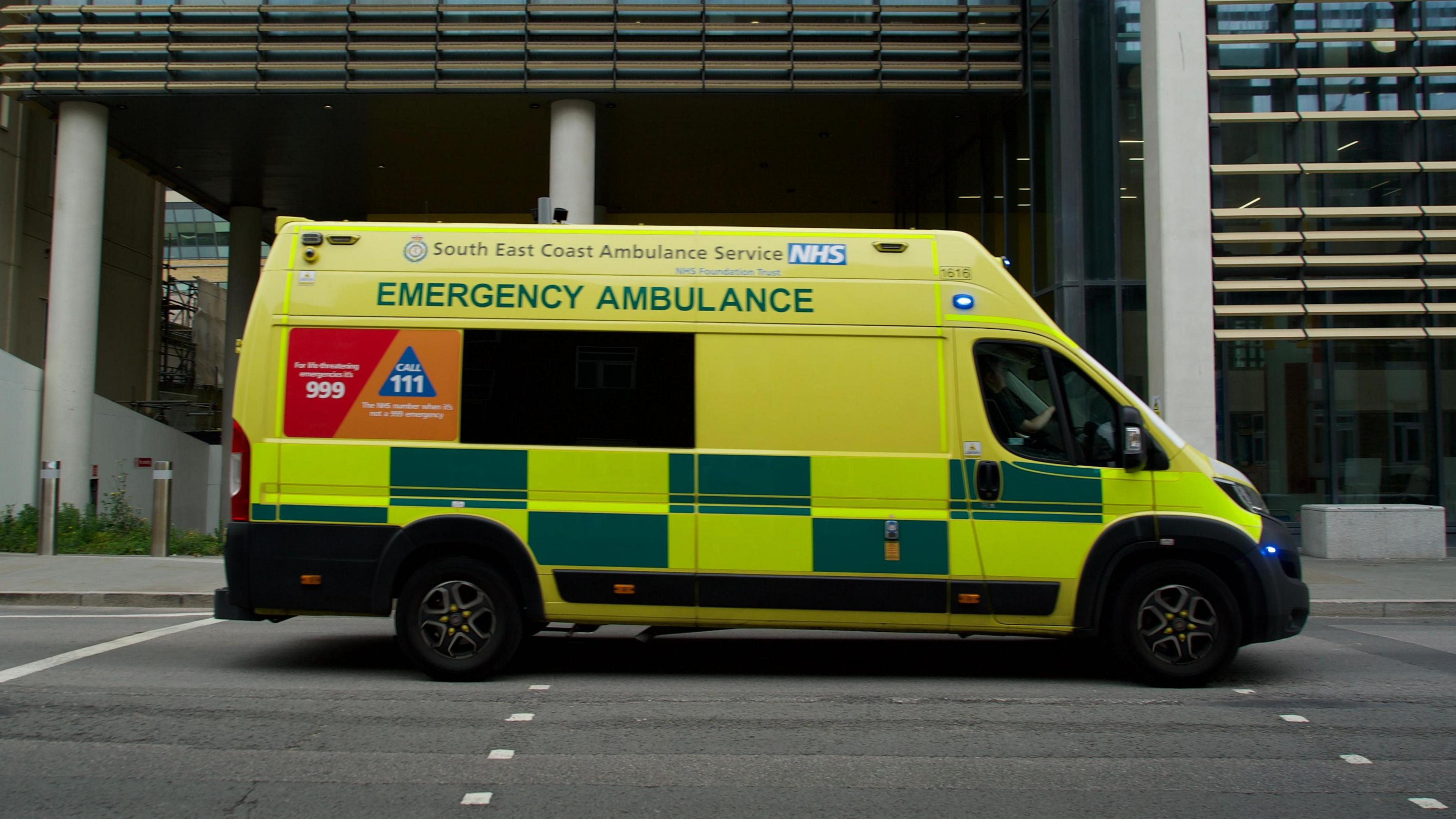Focus on 'virtual response' for ambulance calls

More than half of all calls to the ambulance service will get a 'virtual' response.
- Published
More than half of calls to an ambulance service are set to be dealt with virtually in the next five years.
The new plans were outlined by the South East Coast Ambulance Service, which operates services across Kent, Sussex and Surrey.
People who make calls to Secamb on non life-threatening conditions will "receive a virtual video or audio assessment", the trust said.
The trust's chair, Usman Khan said: "We recognise the urgent need for change to improve patient outcomes."
In a new five year strategy published earlier, Secamb said it will "transition from a predominantly ambulance-based service"
Secamb is predicting a 15% increase in demand in the next five years.
Setting out its strategy, the trust said it wants to collaborate more closely with other health and social care providers while also expanding what it calls its "role in care navigation".
By 2029, the trust aims that over a third of all its patients will be signposted to another service "leaving 65 per cent of patients with an ambulance response".
Since July, patients who called Secamb with a non life-threatening condition have received an automated text message when there are delays in receiving a call back. This includes an option to cancel that callback.
The trust's senior managers said in the strategy documents: "By doing things differently we will modernise how we care for our patients."
They trust also intends to use artificial intelligence to "consistently identify patients who need a prompt physical response", and to use "digital solutions" in the way they deploy ambulances to "ensure our emergency patients are seen quickly".
Related topics
- Published7 August 2024

- Published17 July 2024
